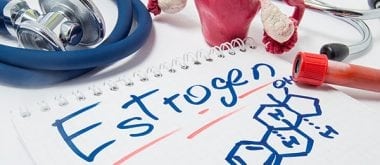Hormonal imbalance can cause a wide range of health problems in both sexes; hypogonadism is one condition caused by limited or no secretion of the sex hormones estrogen and testosterone. It can affect both males and females, but we will explore the condition in women, including its symptoms, possible causes and treatment options.
Hyper vs. Hypo
Both conditions involve the gonads, the primary sexual reproductive organs. In males, these are the testes and in females, they are the ovaries. Hypergonadism refers to the overproduction (hyperactivity) of the gonads, resulting in excessive levels of estrogen and testosterone.
The opposite is true for hypogonadism, which refers to the gonads’ production of little to no sex hormones. Both conditions are treatable, but each has different effects.
Symptoms
The signs and symptoms in women vary, but all of them generally affect a woman’s energy levels, bodily functions, and sex drive. It’s often overlooked and frequently not considered when determining causes of infertility, which makes awareness and proper diagnosis all the more important for women struggling to conceive.
Some of the symptoms of the condition include the following:
- Irregular or absent menstrual cycle
- Slow or no breast growth
- Hot flashes
- Loss of body hair
- Reduced or no sex drive
- Milky discharge from breasts
Diagnosis is done through hormonal testing. A blood test can check for the presence and levels of various sex hormones in the body, including estrogen, follicle-stimulating hormone (FSH) and luteinizing hormone.
Iron levels may also be tested through blood work, as sex hormones and other imbalances can be caused by an iron deficiency. Your doctor will likely test multiple levels in order to rule out any underlying causes or potential triggers that could affect your hormone levels.
Causes

The causes of the primary type include the following:
- Autoimmune disorders
- Genetic disorders such as Turner syndrome and Klinefelter syndrome
- Hemochromatosis, a condition in which the body absorbs too much iron
- Radiation exposure
- Surgery on the sex organs
The causes of the central type may include the following:
- Genetic disorders
- Pituitary disorders
- HIV and other infections
- Inflammatory diseases such as sarcoidosis and tuberculosis
- Nutritional deficiencies
- Rapid weight loss as a result of an illness or extreme dieting
- The presence of a tumor in or near the pituitary gland
It’s important not to jump to conclusions and become panicked at the list of potential causes for any suspected illness. Instead, consider these causes as additional information. If you already have one of the possible causes, your doctor may be able to make the connection to the condition more quickly. If not, these are merely potential causes that some people with the condition have. Your doctor will conduct proper testing and find the underlying cause if a diagnosis is made.
Treatment Options
The good news is that the condition is highly treatable. In most cases, women can be prescribed a hormonal supplement that will increase and stabilize the levels of estrogen and testosterone in their bodies. Supplemental estrogen and hormone therapy can be administered in a variety of ways, including a patch and a pill.
Increased levels of estrogen can increase the risk of endometrial cancer, so your doctor should include a supplement of progesterone to reduce the likelihood of cancer.
The exact type of hormone therapy will depend on the severity of your condition and specific symptoms. For example, hot flashes and a low sex drive may benefit from a different dose of treatment than infertility and menstrual problems.
Speak with your doctor at your earliest convenience to learn more about the symptoms of hypogonadism, how to treat the condition and how to manage your symptoms after diagnosis.





